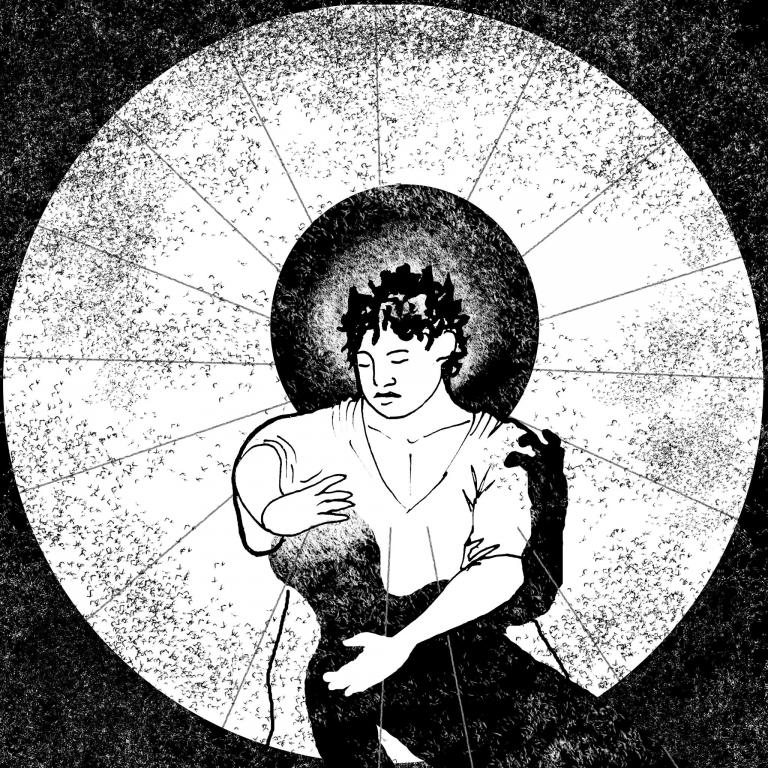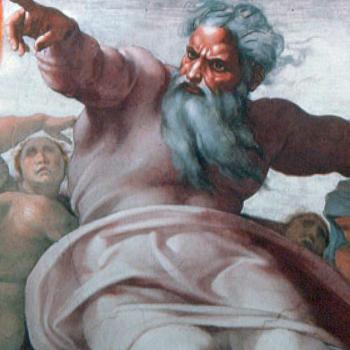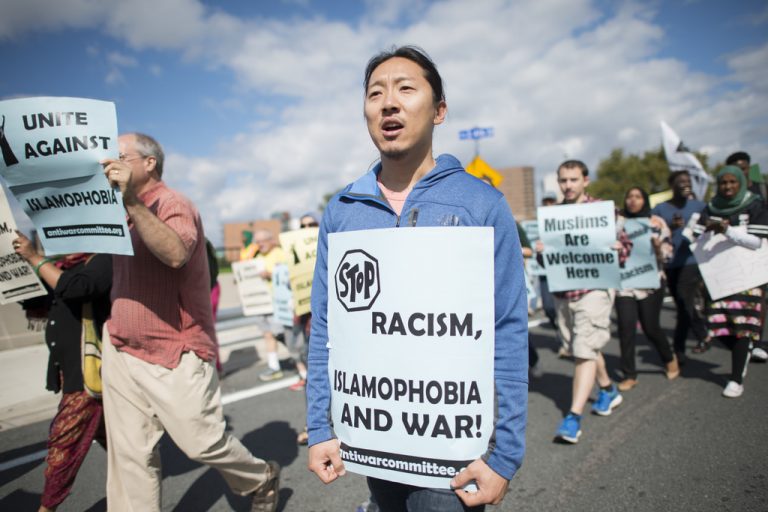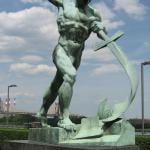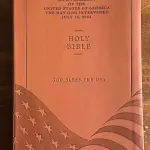
Christian history is filled with radical expressions. For most of these groups, radical tendencies were intertwined with spiritual and theological convictions. Their spirituality and politics were integrated.
Most of these movements–if not all–were heavily mystical. Mysticism is, at it’s core, the assumption that it is possible to have an unmediated experience of God, of each other, and of creation. This quickly gives birth to an idea that any structures (physical or societal) that don’t serve such experiences are, instead, obstacles to be dismantled.
It is no coincidence, then, that mystical Christians have always pushed the edge of acceptance, to the point that many were rejected as heretical. What constitutes “truth” in our religious traditions is largely a matter of power as much as it is a matter of honest spiritual exploration.
And so, here is a brief history of groups that, based upon their experience of God in community, proactively sought to strip away oppression to lift up a more radical, liberating, way of experience God and each other–those whose spirituality birthed within them practices of self-organization, voluntary association, mutual aid, and anti-authoritarianism.
The Early Church, some argue, was almost anarchistic. This is, of course, a bold claim. Everyone claims that the heart of their version of Christianity is expressed by the early church. Nevertheless, some of the early Christian communities seem to have practiced certain features of anarchism.
For example, the Jerusalem group, as described in Acts, shared their money and labor equally and fairly among members. There are also indications of consensus decision making (Acts 15). Within Pauline Christianity, we see glimpses of mutual submission rather than hierarchy (Ephesians 5), a charismatic understanding of authority and power wherein spiritual authority isn’t located within any one person but, instead, any person could manifest the Spirit (1 Corinthians 12-14), and a fundamental egalitarianism (Galatians 3 and Colossians 3).
Some, such as Ammon Hennacy of the Catholic Worker movement, have claimed that a “shift” away from Jesus’ practices and teachings of nonviolence, simple living, and freedom occurred in the theology of Paul of Tarsus. Hennacy (and others) suggest that Christians should look at returning to pre-Pauline Christianity. However, if we focus on writings clearly belonging to Paul while grappling with the complexity of his context and rhetoric, we can see within the Pauline epistles ideas with revolutionary implications.
Others point further down the road to the evolving relationship with the State (leading to what many call the “Constantinian Shift”). It is clear that in its earliest centuries, the Church rejected the religion, economics, and violence of empire. Often, Christians saw themselves as a distinct socio-political reality which, while not necessarily anarchistic, certainly had many similar components. This socio-political distinction eroded as Christianity gained favor in the Roman Empire.
The Bogomils were a 10th Century sect with Gnostic tendencies. They called for a return to early Christianity and, as a result, rejected church authority. They also resisted state authority. They didn’t build church buildings, preferring to worship outdoors. They were dualists who saw corporeal life as a creation of the Devil. Nevertheless, their anti-materialism led them to refuse to pay taxes, to work as serfs, or to fight in wars. It is possible that the Bogomils reflected the sentiments of earlier gnostic groups whose socio-political views have been obscured.
Beguines and the Beghards were lay orders of women and men in the 12th to 14th centuries. They often lived a monastic lifestyle together without formally taking vows. Communities were autonomous, largely egalitarian, and often challenged class distinctions. They shared their resources with one another. Many came as single people and left, without penalty, to become married.
They found themselves in trouble with both the Church and the State, since the Beguines and Beghards often did things according to their own communal discernment. Many influential Beguines believed in an unmediated mystical connection with God, thus rendering the structures of the Church (and therefore the State) largely inconsequential. One of their leading figures, Marguerite Porete was burnt at the stake as a heretic.
The Lollards—followers of John Wycliffe who were deemed heretics and extremists—had anti-authoritarian tendencies that flowed from their understanding of the Gospel. Their movement began in the mid 14th century and continued into the Reformation. In their document the Twelve Conclusions of the Lollards (penned in 1396-1397), they rejected papal authority, challenged the political collusion of State and Church, and undermined the legitimacy of war.
The Anabaptists (the radical reformers of the 16th Century) initially lived autonomously with indifference to secular government. And, while largely patriarchal, such groups practiced a sort of egalitarianism that didn’t invest authority into any one individual. Through the ages some of this indifference has eroded. In his essay on anarchism for the Encyclopedia Britannica, Peter Kropotkin traces the birth of anarchist thought in Europe to early Anabaptist communities. This makes sense, since traditional Anabaptists separated themselves from the functions and practices of the State. In addition, Anabaptists past and present have generally embraced pacifism and some groups have held property in common.
The Quakers (Society of Friends) formed in the 17th century. The Quakers have a astonishingly flat hierarchy; all decisions are made locally and in larger bodies by consensus (which has had a tremendous influence on modern activist decisionmaking). Their strong egalitarianism made them among the earliest white abolitionists and supporters of women’s suffrage. Their historic commitment to peace has caused them to not only reject war, but also activate a surprising number of international peace workers.
The Diggers were a 17th century group of agrarian communists in England. They believed in holding land in common in small egalitarian rural communities. Founder of the movement, Gerrard Winstanley argued in his 1649 pamphlet Truth Lifting up its Head above Scandals that power corrupts, that property enslaves, and that freedom is only possible in a society without rulers. They were deeply influenced by the example given in the early chapters of Acts. The Diggers are a fascinating example of how the communist impulses of the early church inspired a communist agrarianism that, in turn, nurtured political anti-authoritarianism. With the Diggers, spirituality shaped economics, which in turn, shaped political understanding.
The Dukhobors are a Russian group of unknown origins (though they probably emerged in the 17th Century). They continue to exist primarily in Canada. The Dukhobors reject secular government, Russian Orthodoxy, the supreme authority of Scripture, and the divinity of Jesus. Their spirituality is, like many Quakers, based upon the assumption that true spirituality is unmediated, thus rendering any mediative structures unnecessary.
The Tolstoyans are followers of the philosophical and religious views of Russian novelist Leo Tolstoy (1828–1910). They put particular emphasis on the Sermon on the Mount and other teachings of Jesus as a guide for life. Many self-identify as Christians, though in a departure from some other forms of Christianity, they tend to focus more on the teachings of Jesus as a divinely-guided human rather than the Son of God. They do not participate in, or concern themselves with, governmental and worldly affairs, which they consider immoral and corrupt. Thus, they may be described as anarchists, though not all of them claim that title. They embrace a deep pacifism–often refusing to defend themselves. Many are vegetarian or vegan.
The Catholic Workers (particularly its founders) have found common ground between a relatively “conservative” reading of Scripture and political anarchism. Beginning in the early to mid 20th century, the workers center around the practice of the works of mercy, a belief in personalism (the belief that persons are not to be used, but to be respected and loved…and that anything that treats people as objects needs to be rejected), and living communally in either houses of hospitality or farming communes. The workers are involved in anti-war and anti-nuclear resistance and, in recent years, have become increasingly active in anti-globalization work and anti-racism actions.
Liberation Theology in general, and the Ecclesial Base Communities in particular, are not anarchist per se, but within this movement, there has been a huge re-imagining of the authority of Church and of the State. Some early liberationists drew inspiration from folks like Dorothy Day (co-founder of the Catholic Worker) and Tolstoy. And, of course, these movements have drawn from radical political movements (from Marxism, anarchism, and other revolutionary movements around the world). At the core of Liberation theology is the insight that God is, somehow, uniquely (and mystically) present among the oppressed. Therefore, we need to engage in solidarity with the oppressed if we are going to have a meaningful experience of God.
There are, of course, other groups worth mentioning. The Franciscans and other religious orders have a radical tendency, to varying degrees. The Civil Rights Movement was (and is) a deeply spiritual movement, but hasn’t created self-identifying communities like those mentioned above. There have been radical movements in almost every major Christian tradition. However, the examples above give a sketch of a long history of mystical radicalism within church history.


